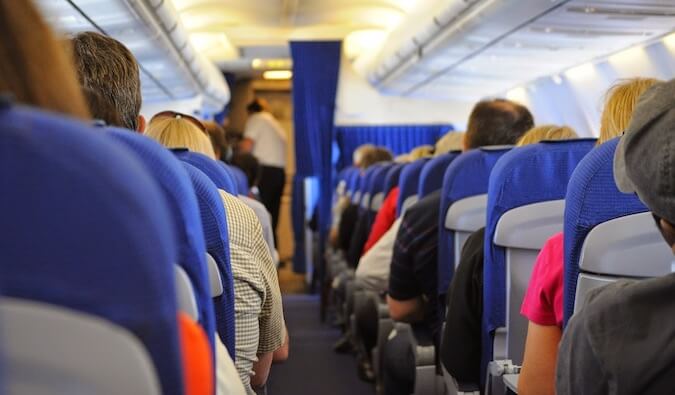Turbulence is not dangerous, but it certainly feels like it is.
So, how does a fearful flyer cope with a turbulence?
The following written content by Tom Bunn L.C.S.W.

The thing that troubles fearful fliers most is turbulence. In spite of all the distress it causes, turbulence is not a danger at all. There are small changes in the direction or speed of air movements at cruise altitude. Turbulence causes distress because these small changes are amplified by the speed of the plane.
The same changes in the air are not noticeable to a passenger drifting in the air aboard a hot air balloon, But in an airliner, forward speed amplifies the slight up and down changes. Speed can amplify a downward movement of less than an inch, making it feel like the plane is falling a hundred feet.
Think of the difference amplification makes in the sound of a guitar.
- When the string of an acoustic guitar is plucked, the string moves a fraction of an inch. The vibrating string causes changes in the air which make your ear’s tympanic membrane vibrate. Its vibration is transformed by the mind into a pleasant sound.
- When the string of an electric guitar is plucked, it still moves only a fraction of an inch. But through amplification, the vibration of your tympanic membrane is greater. Amplification causes the sound to be experienced as louder.
Subscribe here
Similarly, when the small changes in the air are amplified by the speed of the plane, a motion that would be imperceptible in a hot air balloon is experienced as a feeling in an airliner. What seems to be falling triggers the amygdala, the part of the brain that releases stress hormones. The stress hormones stimulate the sympathetic nervous system, causing it to increase your heart rate and breathing rate. Since turbulence causes one feeling of falling after another, there is one release of stress hormones after another. The sympathetic nervous system becomes overstimulated.
The parasympathetic nervous system is supposed to neutralize such overstimulation. But in many of us, the parasympathetic nervous system does not provide adequate neutralization. It does not prevent the sympathetic nervous system from producing the same physical sensations we experience when in danger: rapid heartbeat, rapid breathing, sweatiness, and tension. These feelings, because they are associated with danger, can make us believe we are in danger. even when we are not. If turbulence continues, stress hormone build-up may cause pounding heart, hyperventilation, feeling cold and clammy, and panic. Read more from Psychology Today.





